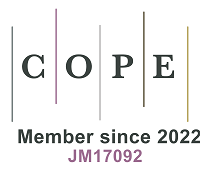REFERENCES
1. Luo X J, Mai B X. Bioaccumulation of emerging persistent organic pollutants. Science Press, Beijing; 2017. p.254-255 (In Chinese).
2. Hoh E, Zhu L, Hites RA. Dechlorane plus, a chlorinated flame retardant, in the Great Lakes. Environ Sci Technol 2006;40:1184-9.
3. Sverko E, Tomy GT, Reiner EJ, et al. Dechlorane plus and related compounds in the environment: a review. Environ Sci Technol 2011;45:5088-98.
4. Xian Q, Siddique S, Li T, Feng YL, Takser L, Zhu J. Sources and environmental behavior of dechlorane plus-a review. Environ Int 2011;37:1273-84.
5. Wu B, Liu S, Guo X, et al. Responses of mouse liver to dechlorane plus exposure by integrative transcriptomic and metabonomic studies. Environ Sci Technol 2012;46:10758-64.
6. Comprehensive toxicity study of dechlorane plus on the earthworm eisenia fetida. Nanjing, Nanjing University; 2014. p.17-22 (In Chinese).
7. ECHA (European Chemicals Agencies. Dechlorane). Plus and its syn- and anti-isomers. Draft risk profile. Available from: https://echa.europa.eu/documents/10162/28991553/draft_risk_profile_dechlorane-plus_en.pdf/df683e4a-06d5-676f8180-106bac9bbdf4 [Last accessed on 28 Jun 2022].
8. Feo ML, Barón E, Eljarrat E, Barceló D. Dechlorane Plus and related compounds in aquatic and terrestrial biota: a review. Anal Bioanal Chem 2012;404:2625-37.
9. Li YL, Meng YZ, Zhao LF, et al. Progress on dechlorane plus, an emerging organic pollutant in environment. Environ Sci Technol 2012;35:79-83. (in Chinese)
10. Luo XJ, Wu JP, Chen SJ, et al. Species specific bioaccumulation of polybrominated diphenyl ethers, hexabromocyclododecan and dechlorane plus in biota: a review. Scientia Sinica Chimica 2013;43:291-304 (in Chinese).
11. Wang P, Zhang Q, Zhang H, et al. Sources and environmental behaviors of Dechlorane Plus and related compounds - a review. Environ Int 2016;88:206-20.
12. Zafar MI, Kali S, Ali M, et al. Dechlorane Plus as an emerging environmental pollutant in Asia: a review. Environ Sci Pollut Res Int 2020;27:42369-89.
13. Qiu X, Marvin CH, Hites RA. Dechlorane plus and other flame retardants in a sediment core from Lake Ontario. Environ Sci Technol 2007;41:6014-9.
14. Tomy GT, Pleskach K, Ismail N, et al. Isomers of dechlorane plus in Lake Winnipeg and Lake Ontario food webs. Environ Sci Technol 2007;41:2249-54.
15. Wang DG, Yang M, Qi H, et al. An Asia-specific source of dechlorane plus: concentration, isomer profiles, and other related compounds. Environ Sci Technol 2010;44:6608-13.
16. Wu JP, Zhang Y, Luo XJ, et al. Isomer-specific bioaccumulation and trophic transfer of Dechlorane Plus in the freshwater food web from a highly contaminated site, South China. Environ Sci Technol 2010;44:606-11.
17. Zhu J, Feng YL, Shoeib M. Detection of dechlorane plus in residential indoor dust in the city of Ottawa, Canada. Environ Sci Technol 2007;41:7694-8.
18. Gauthier LT, Letcher RJ. Isomers of Dechlorane Plus flame retardant in the eggs of herring gulls (Larus argentatus) from the Laurentian Great Lakes of North America: temporal changes and spatial distribution. Chemosphere 2009;75:115-20.
19. Kang JH, Kim JC, Jin GZ, Park H, Baek SY, Chang YS. Detection of Dechlorane Plus in fish from urban-industrial rivers. Chemosphere 2010;79:850-4.
20. Möller A, Xie Z, Sturm R, Ebinghaus R. Large-scale distribution of dechlorane plus in air and seawater from the Arctic to Antarctica. Environ Sci Technol 2010;44:8977-82.
21. Zheng J, Wang J, Luo XJ, et al. Dechlorane Plus in human hair from an e-waste recycling area in South China: comparison with dust. Environ Sci Technol 2010;44:9298-303.
22. Shen L, Reiner EJ, Helm PA, et al. Historic trends of dechloranes 602, 603, 604, dechlorane plus and other norbornene derivatives and their bioaccumulation potential in lake ontario. Environ Sci Technol 2011;45:3333-40.
23. Guo J, Venier M, Salamova A, Hites RA. Bioaccumulation of Dechloranes, organophosphate esters, and other flame retardants in Great Lakes fish. Sci Total Environ 2017;583:1-9.
24. Santín G, Barón E, Eljarrat E, Barceló D. Emerging and historical halogenated flame retardants in fish samples from Iberian rivers. J Hazard Mater 2013;263 Pt 1:116-21.
25. Abdel Malak I, Cariou R, Vénisseau A, et al. Occurrence of Dechlorane Plus and related compounds in catfish (Silurus spp.) from rivers in France. Chemosphere 2018;207:413-20.
26. Sühring R, Möller A, Freese M, et al. Brominated flame retardants and dechloranes in eels from German Rivers. Chemosphere 2013;90:118-24.
27. He MJ, Luo XJ, Wu JP, Chen SJ, Wei SQ, Mai BX. Isomers of Dechlorane Plus in an aquatic environment in a highly industrialized area in Southern China: spatial and vertical distribution, phase partition, and bioaccumulation. Sci Total Environ 2014;481:1-6.
28. Sun R, Luo X, Tang B, et al. Persistent halogenated compounds in fish from rivers in the Pearl River Delta, South China: geographical pattern and implications for anthropogenic effects on the environment. Environ Res 2016;146:371-8.
29. Zhang Z, Tong X, Xing Y, et al. Polybrominated diphenyl ethers, decabromodiphenyl ethane and dechlorane plus in aquatic products from the Yellow River Delta, China. Mar Pollut Bull 2020;161:111733.
30. Wang L, Jia H, Liu X, et al. Dechloranes in a river in northeastern China: spatial trends in multi-matrices and bioaccumulation in fish (Enchelyopus elongatus). Ecotoxicol Environ Saf 2012;84:262-7.
31. Tao W, Zhou Z, Shen L, Zhao B. Determination of dechlorane flame retardants in soil and fish at Guiyu, an electronic waste recycling site in south China. Environ Pollut 2015;206:361-8.
32. Kakimoto K, Nagayoshi H, Yoshida J, et al. Detection of Dechlorane Plus and brominated flame retardants in marketed fish in Japan. Chemosphere 2012;89:416-9.
33. Barón E, Rudolph I, Chiang G, Barra R, Eljarrat E, Barceló D. Occurrence and behavior of natural and anthropogenic (emerging and historical) halogenated compounds in marine biota from the Coast of Concepcion (Chile). Sci Total Environ 2013;461-2:258-64.
34. Klosterhaus SL, Stapleton HM, La Guardia MJ, Greig DJ. Brominated and chlorinated flame retardants in San Francisco Bay sediments and wildlife. Environ Int 2012;47:56-65.
35. Barón E, Giménez J, Verborgh P, et al. Bioaccumulation and biomagnification of classical flame retardants, related halogenated natural compounds and alternative flame retardants in three delphinids from Southern European waters. Environ Pollut 2015;203:107-15.
36. Zhang XL, Luo XJ, Liu HY, Yu LH, Chen SJ, Mai BX. Bioaccumulation of several brominated flame retardants and dechlorane plus in waterbirds from an e-waste recycling region in South China: associated with trophic level and diet sources. Environ Sci Technol 2011;45:400-5.
37. Zhang H, Wang P, Li Y, et al. Assessment on the occupational exposure of manufacturing workers to Dechlorane Plus through blood and hair analysis. Environ Sci Technol 2013;47:10567-73.
38. Chen W, Li J, Dong Z, et al. Correlations between dechlorane plus concentrations in paired hair and indoor dust samples and differences between dechlorane plus isomer concentrations in hair from males and females. Chemosphere 2019;231:378-84.
39. Sühring R, Freese M, Schneider M, et al. Maternal transfer of emerging brominated and chlorinated flame retardants in European eels. Sci Total Environ 2015;530-531:209-18.
40. Jia H, Sun Y, Liu X, et al. Concentration and bioaccumulation of dechlorane compounds in coastal environment of northern China. Environ Sci Technol 2011;45:2613-8.
41. Na G, Yao Y, Gao H, et al. Trophic magnification of Dechlorane Plus in the marine food webs of Fildes Peninsula in Antarctica. Mar Pollut Bull 2017;117:456-61.
42. Wu JP, Chen XY, Si-Kang W, et al. Dechlorane Plus flame retardant in a contaminated frog species: biomagnification and isomer-specific transfer from females to their eggs. Chemosphere 2018;211:218-25.
43. Venier M, Hites RA. Flame retardants in the serum of pet dogs and in their food. Environ Sci Technol 2011;45:4602-8.
44. Chen W, Bao J, Bu T, et al. Dechlorane Plus biomagnification and transmission through prairie food webs in Inner Mongolia, China. Environ Toxicol Chem 2021;40:413-21.
45. Zheng XB, Luo XJ, Zeng YH, Wu JP, Mai BX. Sources, gastrointestinal absorption and stereo-selective and tissue-specific accumulation of Dechlorane Plus (DP) in chicken. Chemosphere 2014;114:241-6.
46. Sun Y, Luo X, Wu J, et al. Species- and tissue-specific accumulation of Dechlorane Plus in three terrestrial passerine bird species from the Pearl River Delta, South China. Chemosphere 2012;89:445-51.
47. Sun YX, Xu XR, Hao Q, et al. Species-specific accumulation of halogenated flame retardants in eggs of terrestrial birds from an ecological station in the Pearl River Delta, South China. Chemosphere 2014;95:442-7.
48. Muñoz-Arnanz J, Sáez M, Hiraldo F, et al. Dechlorane plus and possible degradation products in white stork eggs from Spain. Environ Int 2011;37:1164-8.
49. Kim JT, Son MH, Kang JH, Kim JH, Jung JW, Chang YS. Occurrence of legacy and new persistent organic pollutants in Avian Tissues from King George Island, Antarctica. Environ Sci Technol 2015;49:13628-38.
50. Kim JT, Choi YJ, Barghi M, et al. Occurrence, distribution, and bioaccumulation of new and legacy persistent organic pollutants in an ecosystem on King George Island, maritime Antarctica. J Hazard Mater 2021;405:124141.
51. Chen K, Zheng J, Yan X, et al. Dechlorane Plus in paired hair and serum samples from e-waste workers: correlation and differences. Chemosphere 2015;123:43-7.
52. Yan X, Zheng J, Chen KH, et al. Dechlorane Plus in serum from e-waste recycling workers: influence of gender and potential isomer-specific metabolism. Environ Int 2012;49:31-7.
53. Rjabova J, Bartkevics V, Zacs D. The occurrence of Dechlorane Plus and related norbornene-based flame retardants in Baltic wild salmon (Salmo salar). Chemosphere 2016;147:210-7.
54. Muñoz-Arnanz J, Roscales JL, Vicente A, Aguirre JI, Jiménez B. Dechlorane Plus in eggs of two gull species (Larus michahellis and Larus audouinii) from the southwestern Mediterranean Sea. Anal Bioanal Chem 2012;404:2765-73.
55. Gentes ML, Letcher RJ, Caron-Beaudoin E, Verreault J. Novel flame retardants in urban-feeding ring-billed gulls from the St. Lawrence River, Canada. Environ Sci Technol 2012;46:9735-44.
56. Zheng XB, Wu JP, Luo XJ, Zeng YH, She YZ, Mai BX. Halogenated flame retardants in home-produced eggs from an electronic waste recycling region in South China: levels, composition profiles, and human dietary exposure assessment. Environ Int 2012;45:122-8.
57. Mo L, Wu JP, Luo XJ, et al. Dechlorane Plus flame retardant in kingfishers (Alcedo atthis) from an electronic waste recycling site and a reference site, South China: influence of residue levels on the isomeric composition. Environ Pollut 2013;174:57-62.
58. Peng Y, Wu JP, Tao L, et al. Accumulation of Dechlorane Plus flame retardant in terrestrial passerines from a nature reserve in South China: the influences of biological and chemical variables. Sci Total Environ 2015;514:77-82.
59. Chen D, Wang Y, Yu L, Luo X, Mai B, Li S. Dechlorane Plus flame retardant in terrestrial raptors from northern China. Environ Pollut 2013;176:80-6.
60. Yu L, Luo X, Zheng X, et al. Occurrence and biomagnification of organohalogen pollutants in two terrestrial predatory food chains. Chemosphere 2013;93:506-11.
61. Zeng YH, Luo XJ, Tang B, Mai BX. Habitat- and species-dependent accumulation of organohalogen pollutants in home-produced eggs from an electronic waste recycling site in South China: Levels, profiles, and human dietary exposure. Environ Pollut 2016;216:64-70.
62. de la Torre A, Alonso MB, Martínez MA, et al. Dechlorane-related compounds in franciscana dolphin (Pontoporia blainvillei) from southeastern and southern coast of Brazil. Environ Sci Technol 2012;46:12364-72.
63. Ren G, Yu Z, Ma S, et al. Determination of Dechlorane Plus in serum from electronics dismantling workers in South China. Environ Sci Technol 2009;43:9453-7.
64. Siddique S, Xian Q, Abdelouahab N, et al. Levels of dechlorane plus and polybrominated diphenylethers in human milk in two Canadian cities. Environ Int 2012;39:50-5.
65. Brasseur C, Pirard C, Scholl G, et al. Levels of dechloranes and polybrominated diphenyl ethers (PBDEs) in human serum from France. Environ Int 2014;65:33-40.
66. Zhang Y, Wu JP, Luo XJ, Wang J, Chen SJ, Mai BX. Tissue distribution of Dechlorane Plus and its dechlorinated analogs in contaminated fish: high affinity to the brain for anti-DP. Environ Pollut 2011;159:3647-52.
67. Peng H, Zhang K, Wan Y, Hu J. Tissue distribution, maternal transfer, and age-related accumulation of dechloranes in Chinese sturgeon. Environ Sci Technol 2012;46:9907-13.
68. Liu Y, Luo XJ, Huang LQ, Tao L, Zeng YH, Mai BX. Halogenated organic pollutants in aquatic, amphibious, and terrestrial organisms from an e-waste site: habitat-dependent accumulation and maternal transfer in watersnake. Environ Pollut 2018;241:1063-70.
69. Wang DG, Guo MX, Pei W, Byer JD, Wang Z. Trophic magnification of chlorinated flame retardants and their dechlorinated analogs in a fresh water food web. Chemosphere 2015;118:293-300.
70. Tomy GT, Thomas CR, Zidane TM, et al. Examination of isomer specific bioaccumulation parameters and potential in vivo hepatic metabolites of syn- and anti-Dechlorane Plus isomers in juvenile rainbow trout (Oncorhynchus mykiss). Environ Sci Technol 2008;42:5562-7.
71. Zeng YH, Luo XJ, Tang B, Zheng XB, Mai BX. Gastrointestinal absorption, dynamic tissue-specific accumulation, and isomer composition of dechlorane plus and related analogs in common carp by dietary exposure. Ecotoxicol Environ Saf 2014;100:32-8.
72. Tang B, Luo XJ, Huang CC, et al. Stereoselective bioaccumulation of syn- and anti-Dechlorane plus isomers in different tissues of common carp (Cyprinus carpio). Sci Total Environ 2018;616-617:1339-46.
73. Li Y, Yu L, Wang J, Wu J, Mai B, Dai J. Accumulation pattern of Dechlorane Plus and associated biological effects on rats after 90 d of exposure. Chemosphere 2013;90:2149-56.
74. Li Y, Yu L, Zhu Z, et al. Accumulation and effects of 90-day oral exposure to Dechlorane Plus in quail (Coturnix coturnix). Environ Toxicol Chem 2013;32:1649-54.
75. Li ZR, Luo XJ, Luo YL, Zeng YH, Mai BX. Comparative study of dechlorane plus (DP) in adult chickens and developing embryos: Stereo-selective bioaccumulation of DP in chickens. Environ Pollut 2019;247:550-5.
76. Chabot-Giguère B, Letcher RJ, Verreault J. In vitro biotransformation of decabromodiphenyl ether (BDE-209) and Dechlorane Plus flame retardants: a case study of ring-billed gull breeding in a pollution hotspot in the St. Lawrence River, Canada. Environ Int 2013;55:101-8.
77. Zhao L, Gong N, Mi D, et al. Kinetics of stereoselective enrichment of Dechlorane Plus in Ulva Pertusa. Chemosphere 2014;111:580-6.
78. Zhang Y, Luo XJ, Mo L, Wu JP, Mai BX, Peng YH. Bioaccumulation and translocation of polyhalogenated compounds in rice (Oryza sativa L.) planted in paddy soil collected from an electronic waste recycling site, South China. Chemosphere 2015;137:25-32.
79. Cheng Y, Ding J, Liang X, et al. Fractions Transformation and dissipation mechanism of dechlorane plus in the rhizosphere of the soil-plant system. Environ Sci Technol 2020;54:6610-20.







